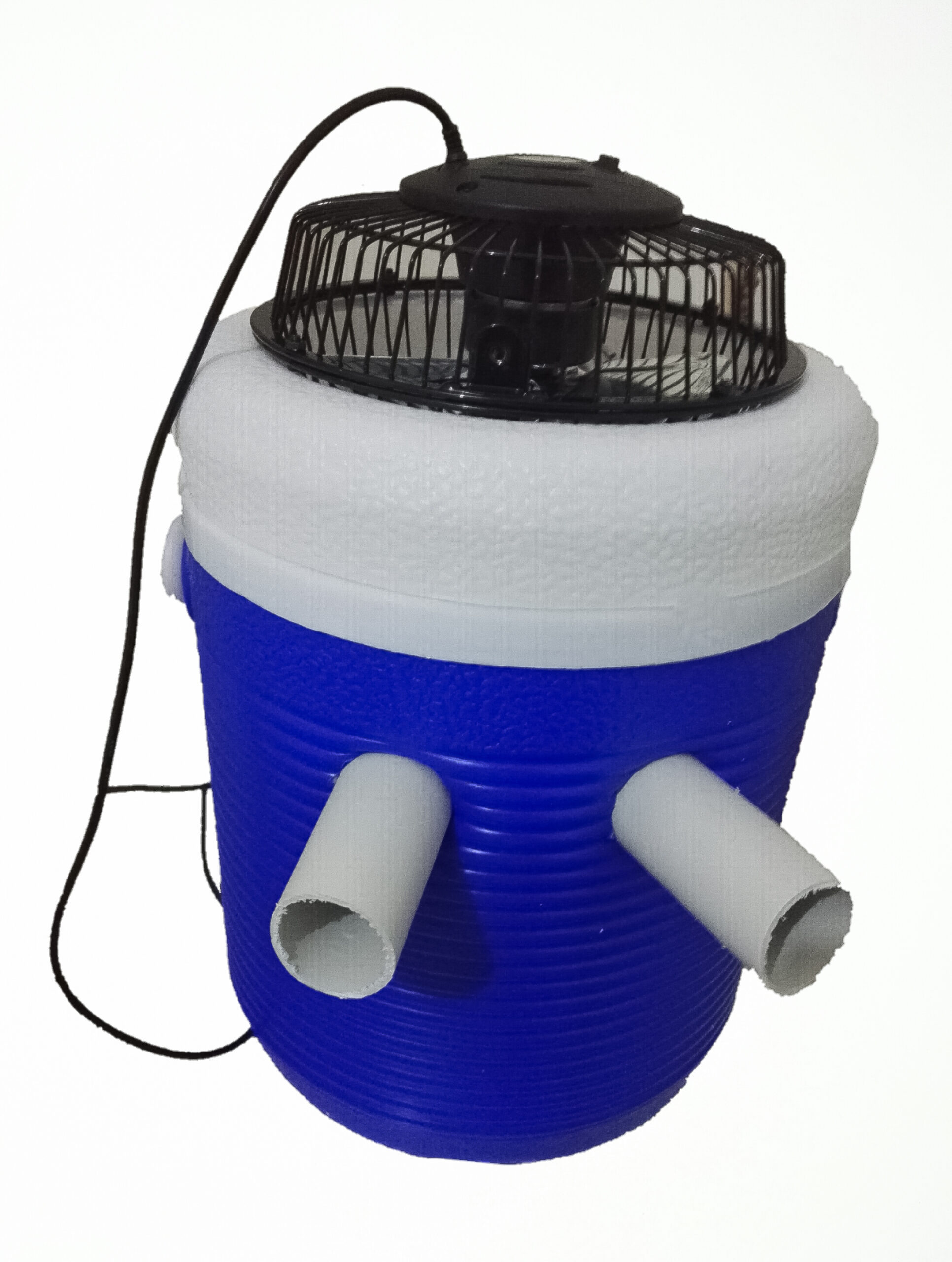How do we know that either Hell is one single temperature or there are no engineers in Hell? If there was a temperature differential and an engineer, they would have made a heat pump and be enjoying mild temperatures.
When you have a device that can both heat and cool the inside of a building, we call it a “heat pump”. An Air Conditioner is a heat pump that is optimized to pump heat out of a building.
A heat pump is a practical application of the Ideal Gas Law. The gist of the Ideal Gas Law, in this context, is that as the pressure decreases, heat also decreases.
You can feel this when using a spray can. If you allow the gas to escape, the pressure inside decreases and the can gets colder.
So a heat pump works by having a compress turn a gas into a liquid. This causes the temperature of the liquid to go up, lots. That hot liquid is then moved through a radiator. A fan blows air through that radiator, transferring heat from the liquid to the air.
This causes the air to be warmer leaving the heat pump than when it entered.
That compressed liquid is now cooler. It is then moved to an orifice where it is allowed to expand rapidly. Following the Ideal Gas Law, this causes the temperature to drop.
This cold gas is then pushed through a different radiator. This radiator takes heat from the air being blown across it and transfers that heat to the gas.
The gas then ends up back at the compressor, ready to start its trip again.
Heat pumps can be efficient if there is enough temperature differential on the waste side. In other words, they don’t work well in the north country where you are attempting to pull heat from sub freezing air. The cooling side still works in hot places because it is easier to add heat to already hot air than to pull heat from cold air.
The real problem is that compressor. That compressor does real work. Real work always has waste heat. So that compressor is turning expensive electricity into heat and then trying to get rid of the heat.
For a heat pump to work, you need an appropriate gas, a compressor, two heat exchangers, and at least two fans.
The Swamp Cooler
These things are old technology. They have been around for thousands of years. The basic method they use is to move air across water. The air moving across the water causes the water to evaporate. As the water evaporates, it sucks heat out of the air.
We will start with some numbers.
To raise one gram of water (also known as a ml) requires one calorie.
There are 252 calories in a BTU.
To raise one ml of water from 24°C to 100° requires 76 Calories.
To cause water to change state from a liquid to a gas requires 540 Calories.
That means that causing one ml of water to evaporate will take two BTUs of heat.
A swamp cooler does just this. It transfers heat into water vapor. You place the swamp cooler where there is a cross breeze. A fan blows air across a water impregnated membrane of some sort, think a porous towel or a piece of cheese cloth.
As the air moves across the water, the water evaporates, pulling heat from the air.
The cooler air now flows into the room with a little more moisture in it.
Depending on the amount of moisture in the air, a swamp cooler can drop the temperature, in the local area, by up to 30°F.
That’s not bad.
Above is a homemade version of a swamp cooler. It works by blowing air on water that then evaporates and cooler air comes out the side vents.
I purchased a Chinese made version. It is about 2.5 ft tall, about a foot square. It holds 4 liters of water, a little more than a gallon.
It has a fiber honeycomb to hold the water. There is a small fish tank type pump in the reservoir to pump water up to a holding tank. From there, water flows at a fixed rate into the honeycomb.
There is one major fan to move air across the honeycomb. There is a second, small motor to move vanes to redirect the air.
That’s it.
This thing pulls less power than one of our normal window fans. That’s because we aren’t running the fan at full speed. Instead, we are running the fan at medium while the pump and oscillator run.
And bluntly, the only reason I know the oscillator has its own motor is because there are electronic controls to turn it off and on.
One nice thing is the remote. There have been a couple of times when the room has gotten too cold for sleeping comfortably. The remote has an easy to find “off” button. Which is what I use.
Total cost for this? $99 from Amazon.
If you are running fans for cooling, it is worth while looking into a modern swamp cooler.


And on an industrial scale … Cooling towers (e.g. the iconic nuke plants) use the same thermodynamics effect to dump waste heat to the atmosphere. That’s why they look like they’re emitting smoke – it’s really water vapor.
A few caveats re swamp coolers.
One is that they work better in lower humidity environments. In the Southwest, for instance, they work great, and it’s common to see house sized units either in place of, or augmenting, air conditioners. To be effective, you need to open windows a bit to allow the cooler, more humid air to flow through the house, as they suck in outside air. Which is great until summer wild fire season comes around and you start blowing smoky air through the house … not ideal.
The other thing is that you have to maintain them. The harder your water the more often you need to clean or replace the filters.
Not to mention that the water and/or filter should be changed or cleaned regularly to avoid raising a crop of pathogenic microorganisms that may cause illnesses.
Adding a disinfecting dose of bleach (or other disinfectant) also helps.
I was thinking about a homemade version this morning; fan, frame to hold some wet bath towels and a tray for water……
On refrigerators: there’s an interesting technology called “absorption refrigerator”. I’m not quite sure how they work in detail, but they can be found in campers. The odd thing is that they use a heat source to drive the device, with no moving parts. Our first home refrigerator was one of these, and propane powered refrigerators are the same thing.
So your hypothetical hellish refrigerator could easily be one of those. Or, of course, it could be powered by electricity from a thermopile (an array of thermocouples).
Yes, I am already looking for replacement water honeycombs. And the instructions are clear about cleaning and using bleach.
I have no intention of letting this thing turn into a biohazard.